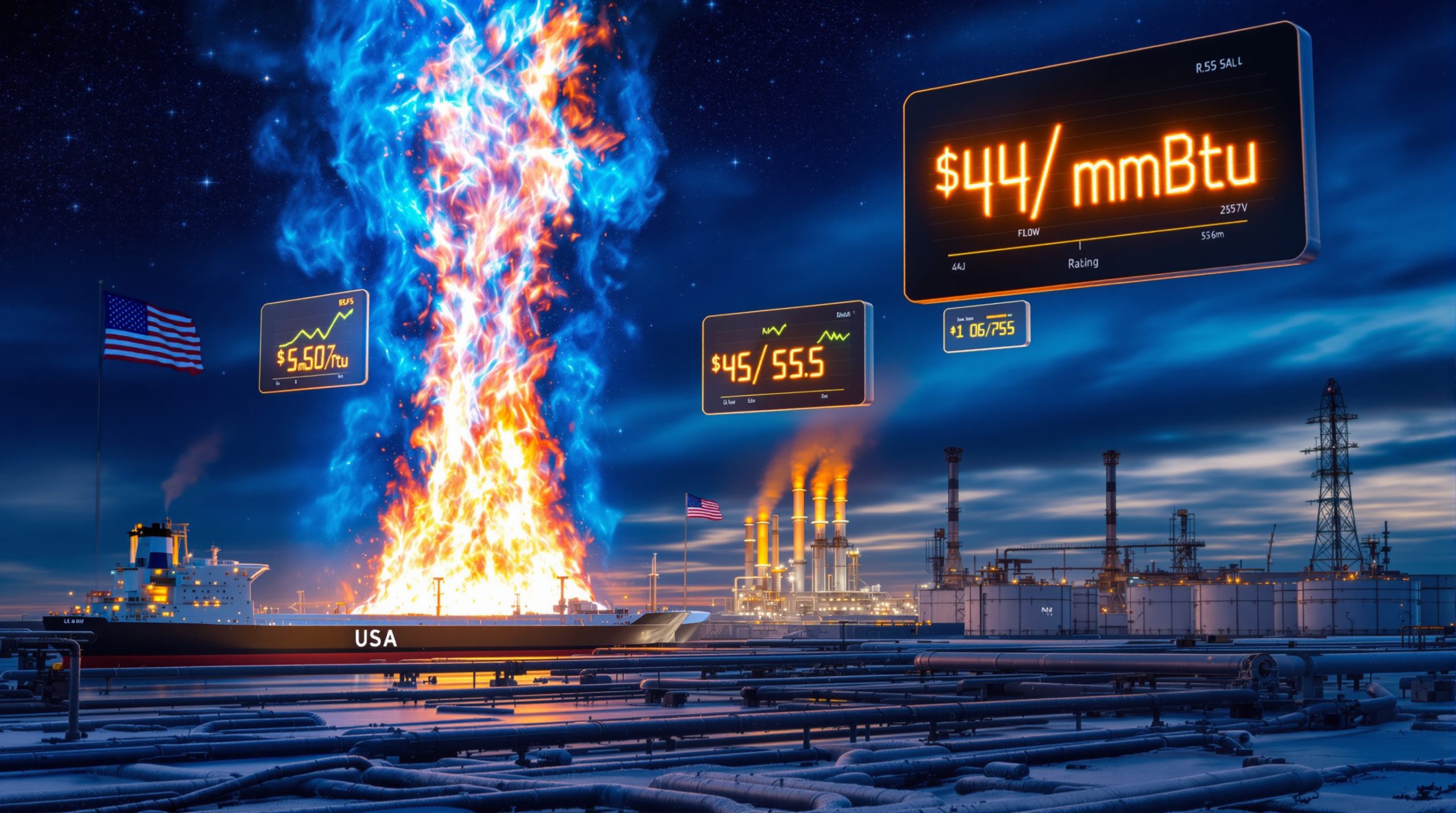Understanding Crude Oil Prices Today: Market Dynamics and Global Influences
The global oil market operates as a complex ecosystem where multiple forces create constant price fluctuations. From supply-demand fundamentals to geopolitical tensions, various elements intertwine to determine crude oil prices today. This intricate dance of market dynamics affects everything from consumer energy costs to global economic stability.
What Factors Are Driving Crude Oil Prices Today?
Current Price Movements and Recent Trends
As of July 2025, oil markets display moderate volatility with WTI crude trading at $68.33, up 0.59%, while Brent crude stands at $70.02, showing a 0.63% increase. These movements reflect the delicate balance between supply concerns and demand expectations in the global energy landscape.
Recent price rallies have faced headwinds from inventory builds, creating uncertainty among traders about sustainability. The interplay between production decisions and consumption patterns continues to drive day-to-day price fluctuations, with markets remaining highly responsive to supply disruptions and demand signals.
OPEC+ Production Decisions and Market Impact
OPEC+ has recently surprised markets with an oversized output hike, signaling a strategic shift that could significantly impact global supply dynamics. Saudi Arabia, the group's de facto leader, has implemented a dual strategy—raising oil prices while simultaneously increasing crude exports by approximately 400,000 barrels per day in April.
Goldman Sachs analysts anticipate another potential "superhike" in September, suggesting continued volatility in production levels throughout 2025. These coordinated actions by producers controlling approximately 40% of global output and over 60% of internationally traded oil demonstrate how OPEC production impact can rapidly reshape market expectations.
Geopolitical Tensions and Supply Disruptions
Ongoing conflicts in the Middle East, particularly Houthi rebel attacks in the Red Sea shipping lanes, have created supply chain disruptions that support higher prices. Recent incidents include attacks on Greek vessels, which pushed oil prices up by approximately 2% as markets priced in risk premiums.
These security concerns in critical maritime corridors continue to introduce volatility into crude oil pricing, offsetting some downward pressure from inventory builds. The persistence of these geopolitical hot spots creates a floor for prices even when fundamentals might otherwise suggest weakness.
Market Insight: "Geopolitical risk premiums aren't simply added and removed from oil prices mechanically—they become embedded in trader psychology and can persist even after immediate threats subside," notes energy security analyst James Richardson.
How Do Regional Price Differences Affect Global Oil Markets?
North American Crude Benchmarks and Pricing
The North American oil market displays significant regional price variations, with Louisiana Light trading at $70.66 (up 2.94% over 7 days) while Western Canadian Select trades at a substantial discount at $55.58. This $12.75 price differential against WTI reflects infrastructure constraints, quality differences, and transportation bottlenecks.
These regional disparities create arbitrage opportunities for traders while presenting challenges for producers in constrained regions. Pipeline capacity limitations particularly impact Canadian producers, forcing them to accept lower prices or seek alternative transport methods like rail, which further erodes margins.
Middle Eastern and African Crude Varieties
Middle Eastern and African crude benchmarks like Murban Crude ($71.56) and Bonny Light ($78.62) trade at premiums to WTI and Brent due to their favorable quality characteristics and strategic positioning for Asian markets. Bonny Light's remarkable $8.60 premium over Brent highlights how quality differentials significantly impact pricing.
These regional variations demonstrate how crude quality (sulfur content, API gravity), transportation logistics, and regional demand patterns create a complex global pricing ecosystem beyond headline benchmark prices. Refiners typically pay premiums for grades that yield higher proportions of valuable products like gasoline and diesel.
Asian Market Dynamics and Pricing Pressures
China's refining sector is experiencing a significant jet fuel glut, which directly impacts its crude purchasing patterns. Chinese buyers have notably avoided U.S. crude for the third consecutive month despite restarting ethane trade, demonstrating how downstream market conditions influence crude procurement strategies.
Asian refiners typically operate with different product yield objectives than their Western counterparts, often seeking crude grades that maximize middle distillate production. These preference patterns create pricing dynamics that ripple throughout global markets, as producers compete to secure market share in this crucial demand center.
What Is the Relationship Between Crude Oil and Natural Gas Prices?
Current Natural Gas Market Conditions
Natural gas prices have declined by 2.11% to $3.340, contrasting with the upward movement in crude oil prices. This divergence highlights the increasingly independent price drivers affecting these energy commodities, with gas responding more directly to regional supply-demand balances and storage conditions.
The European Parliament has recently endorsed eased natural gas storage targets, potentially reducing pressure on global gas markets heading into future winter seasons. This policy shift reflects evolving energy security strategies in the post-pandemic era, with implications for price volatility and market stability.
Pipeline Infrastructure Challenges
The Permian Basin continues to face significant pipeline gridlock issues, with natural gas prices at the Waha hub frequently turning negative throughout 2025. Despite the launch of the Matterhorn Express pipeline, gas flaring has surged to nearly 500 million cubic feet per day.
"Matterhorn Express' startup briefly alleviated Permian constraints, but production growth will renew pressure by 2026," explains Maria Paz Urdaneta of East Daley Analytics. This persistent flaring represents emissions equivalent to 2.2 million cars if sustained annually—a stark illustration of how infrastructure limitations create both economic and environmental challenges.
Environmental Regulations and Market Impact
Increasing scrutiny of flaring practices is creating additional pressure on producers, particularly in the Permian Basin. The International Energy Agency estimates that flaring results in approximately 500 Mt CO2 equivalent annual greenhouse gas emissions globally.
New pipeline projects like Palo Duro and Blackcomb (with 2.5 Bcf/d capacity) aim to address these infrastructure constraints but won't be operational until 2026. This timeline means continued price volatility in regional natural gas markets as production outpaces takeaway capacity, creating periodic price collapses at constrained hubs.
How Do Inventory Levels Influence Oil Price Movements?
Current U.S. Crude Inventory Situation
Recent data shows a significant spike in U.S. crude oil inventories, which has threatened the ongoing price rally. These inventory builds suggest potential oversupply conditions that could exert downward pressure on prices if demand fails to keep pace with production growth.
The market's reaction to these inventory reports demonstrates how supply-demand balances remain fundamental to price formation despite other influencing factors. Traders closely monitor weekly inventory data as a key leading indicator of market imbalances, with unexpected builds or draws often triggering immediate price responses.
Global Storage Capacity and Utilization
Global storage dynamics play a crucial role in price formation, with traders closely monitoring utilization rates across key storage hubs in the U.S., Europe, and Asia. When storage approaches capacity limits, as seen during previous market disruptions, prices can experience heightened volatility.
Storage economics create a feedback loop in pricing—as available capacity diminishes, the cost of storage rises, placing additional downward pressure on spot prices. This dynamic was dramatically illustrated during the pandemic, when storage saturation contributed to negative futures prices as holders paid to avoid physical delivery.
Strategic Petroleum Reserves and Market Intervention
Government-controlled strategic petroleum reserves represent another significant factor in global oil balances. Policy decisions regarding these reserves can substantially impact market sentiment and price trajectories, particularly during periods of geopolitical tension or supply disruption.
These strategic stockpiles serve as both physical and psychological buffers against supply shocks, with release announcements often having immediate price impacts. The effectiveness of these interventions depends on market conditions, with their influence generally more pronounced during supply-driven price spikes than demand-driven movements.
What Role Do Currency Fluctuations Play in Oil Pricing?
U.S. Dollar Strength and Oil Price Correlation
The U.S. dollar's value maintains an inverse relationship with crude oil prices, as crude is predominantly priced in dollars globally. When the dollar strengthens, oil becomes more expensive for holders of other currencies, potentially dampening demand and pressuring prices downward.
Conversely, dollar weakness can support higher oil prices by making purchases more affordable for international buyers. This relationship is not perfectly linear but remains a significant factor in medium-term price movements, particularly when currency markets experience substantial volatility.
Currency Volatility in Major Oil-Producing Nations
Exchange rate fluctuations in major oil-producing countries can significantly impact their fiscal positions and production decisions. Currency devaluations may incentivize increased production to maintain dollar-denominated revenue streams, potentially adding supply to global markets.
Nations heavily dependent on oil revenues often face difficult monetary policy choices during price downturns, as currency interventions to support local economies can deplete foreign reserves. These dynamics create feedback loops between currency markets and oil production strategies that influence global supply balances.
Trade Policies and Currency Impacts
Recent announcements of significant tariffs, such as the 50% tariff on copper that caused prices to skyrocket 17%, demonstrate how tariff policy impact can create ripple effects across commodity markets and currencies. These policy decisions influence not only direct trade in oil but also broader economic growth prospects.
Trade tensions between major economies can shift energy trade flows and alter regional price differentials as buyers seek alternative suppliers. The resulting changes in shipping patterns and refiner preferences can restructure traditional price relationships between regional benchmarks, sometimes leading to an oil price trade war scenario that further complicates market dynamics.
How Are Alternative Energy Sources Affecting Oil Markets?
Renewable Energy Growth and Oil Demand Forecasts
The ongoing expansion of renewable energy capacity continues to influence long-term oil demand projections. Recent developments include the UK launching a new onshore wind strategy to boost clean power output, reflecting continuing policy support for renewable energy transition.
While renewable deployment primarily impacts electricity generation rather than transportation fuels in the near term, the gradual integration of renewables into the broader energy mix creates structural changes in consumption patterns. These shifts are particularly relevant for long-term investment decisions in upstream oil development.
Electric Vehicle Adoption Trends
Electric vehicle manufacturing faces challenges from China's rare earth export controls, with companies like Nissan curbing production of new EV models in response. These supply chain constraints highlight the complex interdependencies between traditional energy markets and emerging technologies.
The pace of EV adoption remains a critical variable in long-term oil demand forecasts, with transportation fuels representing approximately 60% of oil consumption. Current obstacles in battery supply chains and charging infrastructure suggest a more gradual transition than some earlier projections indicated, providing continued demand for petroleum products throughout this decade.
Natural Gas as a Transition Fuel
Natural gas continues to play a significant role as a transition fuel, with developments such as ExxonMobil's discovery of a 350-meter gas column in Cyprus's Pegasus-1 well highlighting ongoing investment in gas resources. The EU's decision to ease natural gas storage targets further supports gas's role during the energy transition.
Gas-fired power generation offers lower emissions than coal while providing dispatchable capacity to complement intermittent renewables. This positioning as a "bridge fuel" ensures continued development of gas resources even as renewable capacity expands, creating complex interconnections between gas and oil markets.
What Are the Major Oil Companies' Production Strategies?
Supermajor Investment and Output Plans
Major oil companies are significantly boosting oil and gas output in Nigeria, demonstrating continued investment in conventional production despite energy transition pressures. Chevron is preparing to close its acquisition of Hess, consolidating its position in key production regions.
These strategic moves reveal how international oil companies are balancing portfolio diversification with core production growth. While many supermajors have increased investments in renewables and low-carbon technologies, they continue to optimize and expand their traditional hydrocarbon businesses to generate cash flow for these transitions.
National Oil Companies and Market Influence
Saudi Aramco is exploring the sale of power plant assets that could raise approximately $4 billion, indicating strategic portfolio adjustments by national oil companies. These state-controlled producers, who manage the majority of global reserves, exercise outsized influence on market balances.
National oil companies often balance commercial objectives with broader national economic and social goals, creating production decisions that may not always align with pure profit maximization. This dynamic adds another layer of complexity to supply forecasting and price formation in global markets.
Independent Producers and Regional Dynamics
Independent producers, particularly in North America, continue to face challenges from infrastructure constraints and environmental regulations. Wildfires in Alberta have recently crippled oil production in the region, demonstrating how both planned strategies and unexpected disruptions influence global supply.
The responsiveness of independent producers to price signals typically exceeds that of national oil companies, making this segment particularly important for short-term market balancing. Financial constraints and investor pressure for capital discipline have moderated the production growth that characterized the early shale boom, creating more measured supply responses to price increases. Furthermore, the US production decline has significant implications for global market balances.
FAQ: Common Questions About Oil Prices
Why are oil prices different around the world?
Oil prices vary globally due to differences in crude quality (light vs. heavy, sweet vs. sour), transportation costs, regional supply-demand balances, and local regulations. Benchmark prices like WTI and Brent serve as reference points, but actual transaction prices reflect these regional factors and quality differentials.
For example, Western Canadian Select trades at a significant discount to WTI due to transportation constraints and its heavier, more sulfurous composition. Conversely, Nigerian Bonny Light commands a premium due to its favorable characteristics that yield more valuable refined products.
How do refinery operations affect crude oil prices?
Refineries convert crude oil into usable products like gasoline, diesel, and jet fuel. Their operational decisions, maintenance schedules, and profit margins (crack spreads) influence which crude grades they purchase and at what price.
When refineries face challenges like China's current jet fuel glut, it can reduce their crude purchases and pressure prices. Seasonal maintenance periods also impact demand for specific grades based on refinery configurations, creating cyclical price patterns in regional markets.
What is the significance of OPEC+ production decisions?
OPEC+ controls approximately 40% of global oil production and over 60% of internationally traded oil. Their coordinated production decisions can significantly influence global supply balances and price levels.
Recent decisions to increase production have introduced new uncertainties about market direction and price sustainability. The group's ability to rapidly adjust output in response to market conditions makes their policy announcements critical price-moving events that traders closely monitor, as reported by Oil Price.
How do futures markets influence physical oil prices?
Oil futures contracts allow market participants to lock in prices for future delivery, providing price discovery and risk management tools. Trading activity in these financial markets can influence physical market sentiment and pricing, particularly during periods of high volatility.
The relationship between futures and physical markets creates feedback loops where expectations about future conditions impact current pricing decisions. This interconnection explains why news affecting long-term supply or demand can cause immediate price movements in spot markets, as tracked by MarketIndex.
Current Market Outlook and Future Price Projections
Short-Term Price Drivers
In the immediate term, crude oil prices today face conflicting pressures from inventory builds and geopolitical tensions. The recent spike in U.S. crude inventories threatens the ongoing price rally, while continued disruptions in the Red Sea shipping lanes provide support.
OPEC+ production increases will likely exert downward pressure if demand growth fails to absorb the additional supply. Market participants remain vigilant for signs of demand weakness, particularly from China, where refining margins and product inventories suggest potential consumption challenges.
Medium-Term Market Balances
Looking toward the latter half of 2025 and into 2026, pipeline infrastructure developments in the Permian Basin will significantly influence North American price dynamics. Projects like the Blackcomb Pipeline (2.5 Bcf/d capacity) and Palo Duro Pipeline are expected to alleviate some regional constraints.
These infrastructure improvements should normalize price relationships between WTI and other benchmarks, potentially reducing the volatility that has characterized Permian gas markets. However, continued production growth may quickly absorb new capacity, necessitating further expansion to prevent renewed bottlenecks.
Long-Term Structural Factors
The energy transition continues to reshape long-term oil demand projections, with policy support for renewables and electric vehicles creating gradual but persistent pressure on fossil fuel consumption growth. However, recent challenges in rare earth supply chains and renewable project development timelines suggest the transition may proceed at an uneven pace.
These structural shifts will likely create a bifurcated market where overall demand growth slows while volatility increases due to underinvestment in traditional supply. The resulting market dynamics could support crude oil prices today and throughout this decade, even as the long-term outlook becomes increasingly uncertain.
Oil markets will continue to reflect both cyclical factors and structural transitions, requiring market participants to balance short-term trading opportunities with long-term strategic positioning. As always, crude oil prices today represent the intersection of immediate market conditions with evolving expectations about our energy future.
Want to Know When the Next Major ASX Discovery Occurs?
Don't miss out on potentially transformative investment opportunities in the resources sector. Discover Alert's proprietary Discovery IQ model instantly notifies subscribers of significant ASX mineral discoveries, providing actionable insights ahead of the broader market. Explore historic returns of major discoveries at https://discoveryalert.com.au/discoveries/ and position yourself for market-leading advantage.




